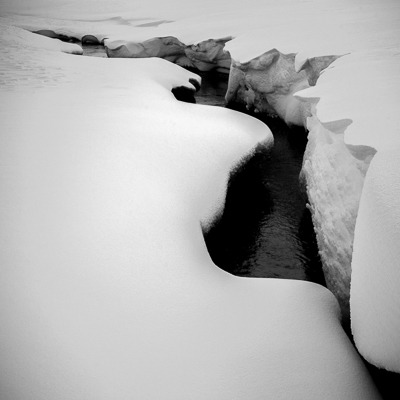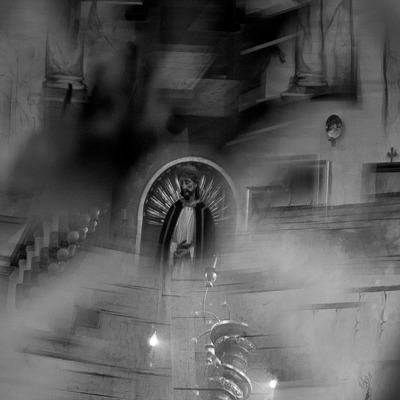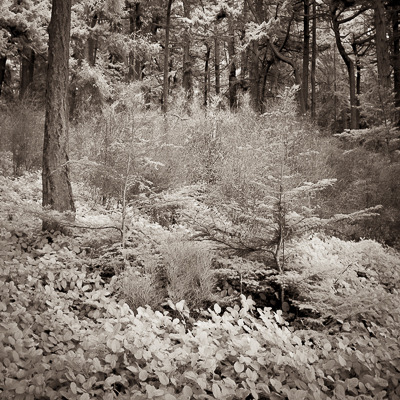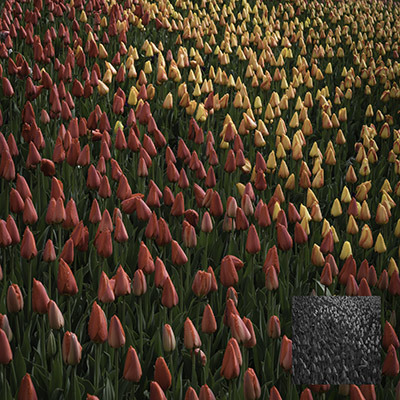Contrast
October 8th, 2019Before we talk about contrast as it relates to flow, let’s address contrast in a general sense.
Contrast is the holy grail of photography. It’s what makes an image an image. Without contrast we’d be looking at a solid, square of uniformly colored space. And while that maybe considered art in a broad definition of the term, it’s probably not why we picked up a camera and starting shooting.
There are four basic types of contrast: tonal, focal, textural and color. It is through careful use of one or more of these types of contrast that we share our view and feelings about the subjects we shoot.
Tonal contrast refers to the light and dark values that are used to create an image.

(Canon Rebel XSi, EF-S15-85 @ 35mm, 1/125s, f/22, ISO 100)
In this picture, of snow banks along a small creek, the image is constructed almost entirely of strong tonal contrast. The dark water of the creek juxtaposed against the white snow banks is the major theme of the image.

(Canon Rebel XSi, EF50, 1/90s, f/2.5, ISO 1600)
Focal contrast refers to the use of sharpness and blur within an image.
In this image, taken at Old Mission San Jose, CA, the main subject is a figure of Christ and the surroundings have been blurred and fractured to give some limited context to the scene while not detracting from the central subject.
(In the upper-right of the picture you can see what looks like a dinner plate or shallow bowl on the wall. The object is covered with small glass mirrors and has a candle holder in front of it. It was used to illuminate the hall before the advent of electric lights. I pointed my lens at one of these reflector dishes at close range to shoot this image.)

(Fujifilm X100T, 23mm, 1/40s, f/8, ISO 500)
Textural contrast refers to the use of textures to create an image. In this picture of a forest scene, the main story is the variety of textures in the fore, middle and backgrounds.
Lastly, an image can be constructed using color contrast.

(Sony α7RII, FE 24-70 @ 70mm, 1/200s, f/11, ISO 100)
The interest in this image of a field of tulips is largely due to the color contrast between the green plants and red flowers. The small black and white inset shows the same image desaturated and the visual interest is mostly gone.
No image is purely one type of contrast. The tonal contrast image (first image) has some textural characteristics and both the focal and textural examples clearly have some tonal contrast too. All images employ a mixture of contrast types and each of the types contribute to the overall interest of the image.
